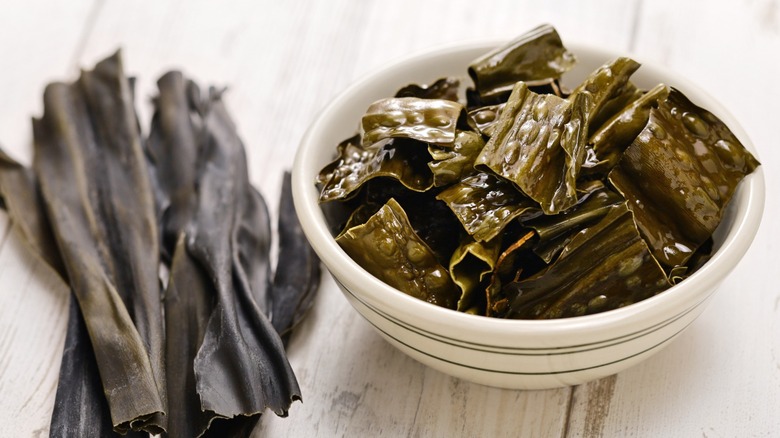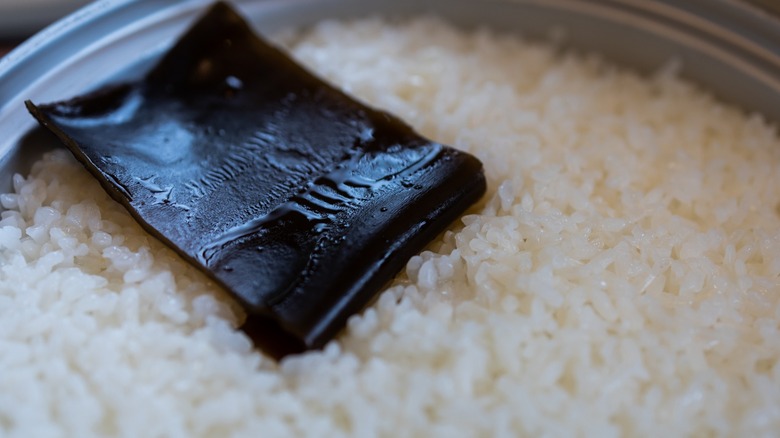When Making Sushi Rice, Add A Piece Of Kombu For A More Traditional Taste
Sushi is renowned for its delicate balance of flavors and textures, and one component is especially fundamental: sushi rice. While often overlooked in favor of the vibrant fish or intricate rolls, sushi rice is the unsung hero that binds the entire experience together. Crafting authentic sushi rice is an art form that requires precision, patience, and an understanding of tradition. One important ingredient is kombu, a type of edible seaweed that infuses the rice with depth and umami, elevating it from a simple grain to a flavorful complement to each bite of sushi.
Kombu adds a subtle yet distinct hint of oceanic essence to the basic short-grain sushi rice, enhancing its overall flavor. The kelp is harvested from the pristine waters of the Pacific Ocean and its thick, leathery fronds are carefully dried to preserve their flavor and nutritional benefits. In addition to flavoring sushi rice, kombu is also used to add depth to broths and sauces and contains essential minerals like iodine and calcium.
Making sushi rice takes practice
Although the ingredients for sushi rice are simple, the process requires some attention to detail to get the right texture – not too soft, not too sticky, but perfectly glossy and tender. Tasting Table recipe developer Miriam Hahn advises starting with a good quality short-grain rice and rinsing it until the water running off is clear. This important step removes surface starch that could make the rice gummy. Then, soak the rinsed rice for 20 to 30 minutes to rehydrate the dried grains.
This will make the cooking process more even, with each grain emerging plump, tender, and properly warmed. Add the correct amount of water to the rice cooking pot along with the soaked rice and then add a piece of kombu that's about 4 inches squared. Cook the rice as suggested, and remove the kombu when the rice is ready. Sushi rice is seasoned with additional vinegar, salt, and sugar, but the background umami flavor of the kombu provides balance and imparts traditional flavor to the rice.
As a bonus, the cooked kombu pieces can be enjoyed separately from your sushi, too. Either cut them into thin slices and simmer with soy sauce and mirin to enjoy them as a side dish, or let them dry and then fry them into crunchy chips or seasonings. Look for kombu at Asian markets — you'll enjoy the extra depth it adds to your sushi rice!

